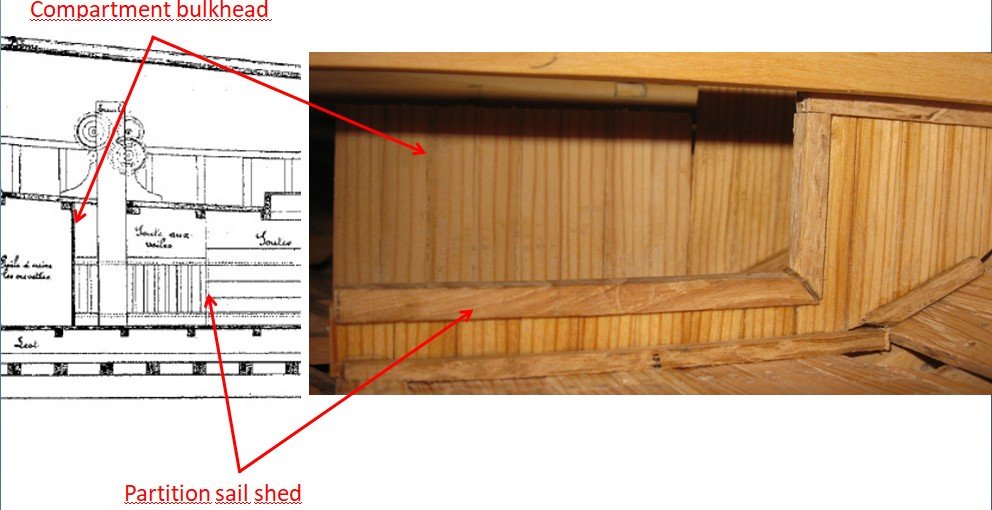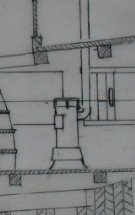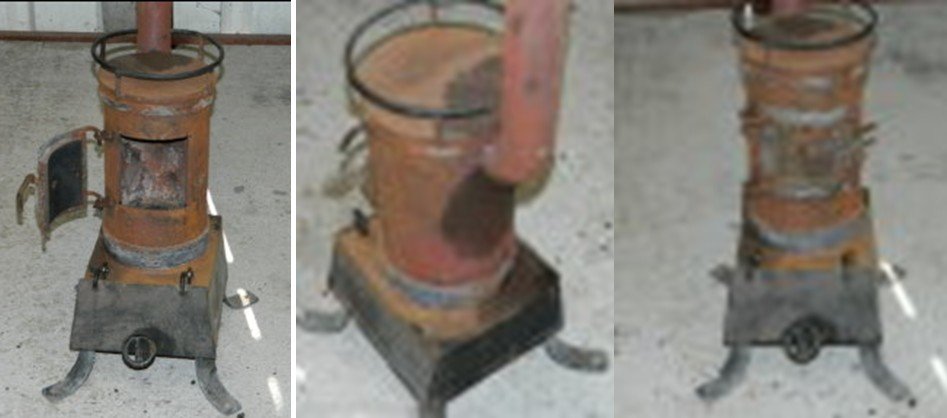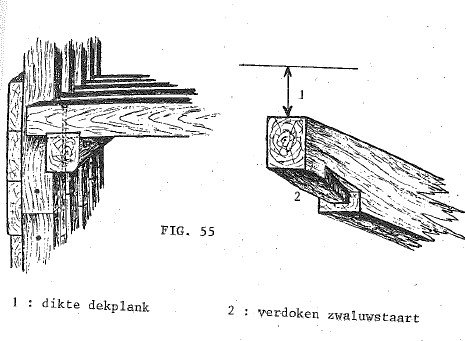-
Posts
1,553 -
Joined
-
Last visited
Content Type
Profiles
Forums
Gallery
Events
Everything posted by G.L.
-
10: Finishing the jib boom support 10.1 In part 7, post 7.1 I made the stringers of the jib boom support. Now it is time to finish it. Once the deck is laid it can't been removed any more. I start with cutting the slots for the block on which the bowsprit will rest. The block is sawn from a small piece of oak and the round groove for the bowsprit was filed in it with a round file.
-
9.3 In the crew shelter were some bunks and a stove (see part 8 post 8.4). When I measure the space in the model, it is all very tiny, much more than the sketch in part 8/post 8.4 suggests. The headroom is only 120 cm. So there is no space for two bunks in line. I decide to make one bunk and a provisions locker.
-
Part 9: Compartments below deck 9.1 Making the compartments: The hull is divided in three main compartments. A crew shelter in the front, in the middle a fish hold and sail/rope/net shed and aft a shrimp cooking store. The bulkheads between the compartments are made from pine planks and do not allways rest against a beam at the top. On the deck and the side face I glue small support slats. A wooden template with the deck beam curve on top indicates the height of the bulk head planks and props them while I glue them. The first plank is erected with the help of a triangle.
-
8.19 Once the deck beams will be fitted in the model, it is important that their upper side is at the correct height. In this case that means one deck plank width below the top of the wale. I check the height with a small plank of 3 mm thickness (thickness of the deck) and mark the size of the notches to be sawn in the deck beams.
About us
Modelshipworld - Advancing Ship Modeling through Research
SSL Secured
Your security is important for us so this Website is SSL-Secured
NRG Mailing Address
Nautical Research Guild
237 South Lincoln Street
Westmont IL, 60559-1917
Model Ship World ® and the MSW logo are Registered Trademarks, and belong to the Nautical Research Guild (United States Patent and Trademark Office: No. 6,929,264 & No. 6,929,274, registered Dec. 20, 2022)
Helpful Links
About the NRG
If you enjoy building ship models that are historically accurate as well as beautiful, then The Nautical Research Guild (NRG) is just right for you.
The Guild is a non-profit educational organization whose mission is to “Advance Ship Modeling Through Research”. We provide support to our members in their efforts to raise the quality of their model ships.
The Nautical Research Guild has published our world-renowned quarterly magazine, The Nautical Research Journal, since 1955. The pages of the Journal are full of articles by accomplished ship modelers who show you how they create those exquisite details on their models, and by maritime historians who show you the correct details to build. The Journal is available in both print and digital editions. Go to the NRG web site (www.thenrg.org) to download a complimentary digital copy of the Journal. The NRG also publishes plan sets, books and compilations of back issues of the Journal and the former Ships in Scale and Model Ship Builder magazines.







